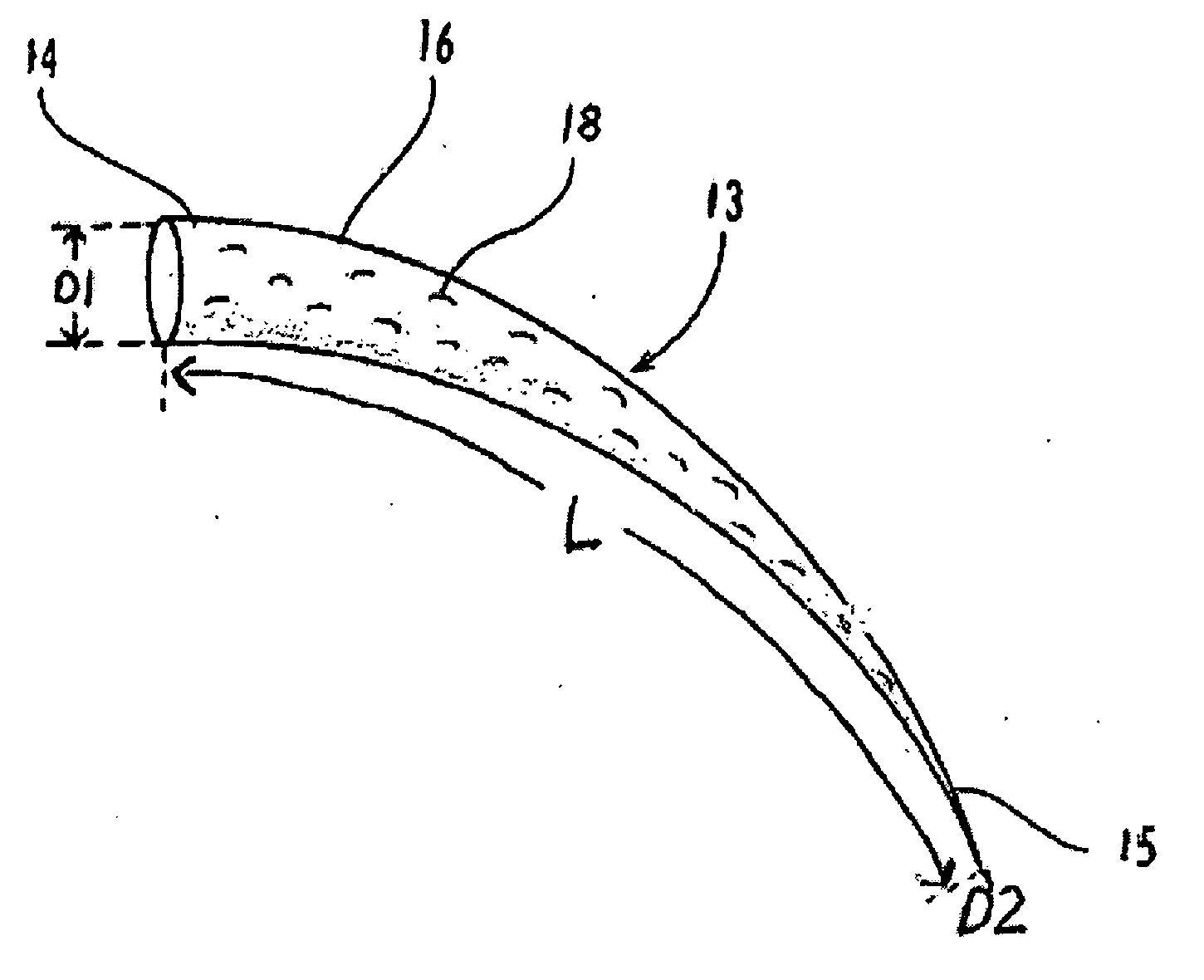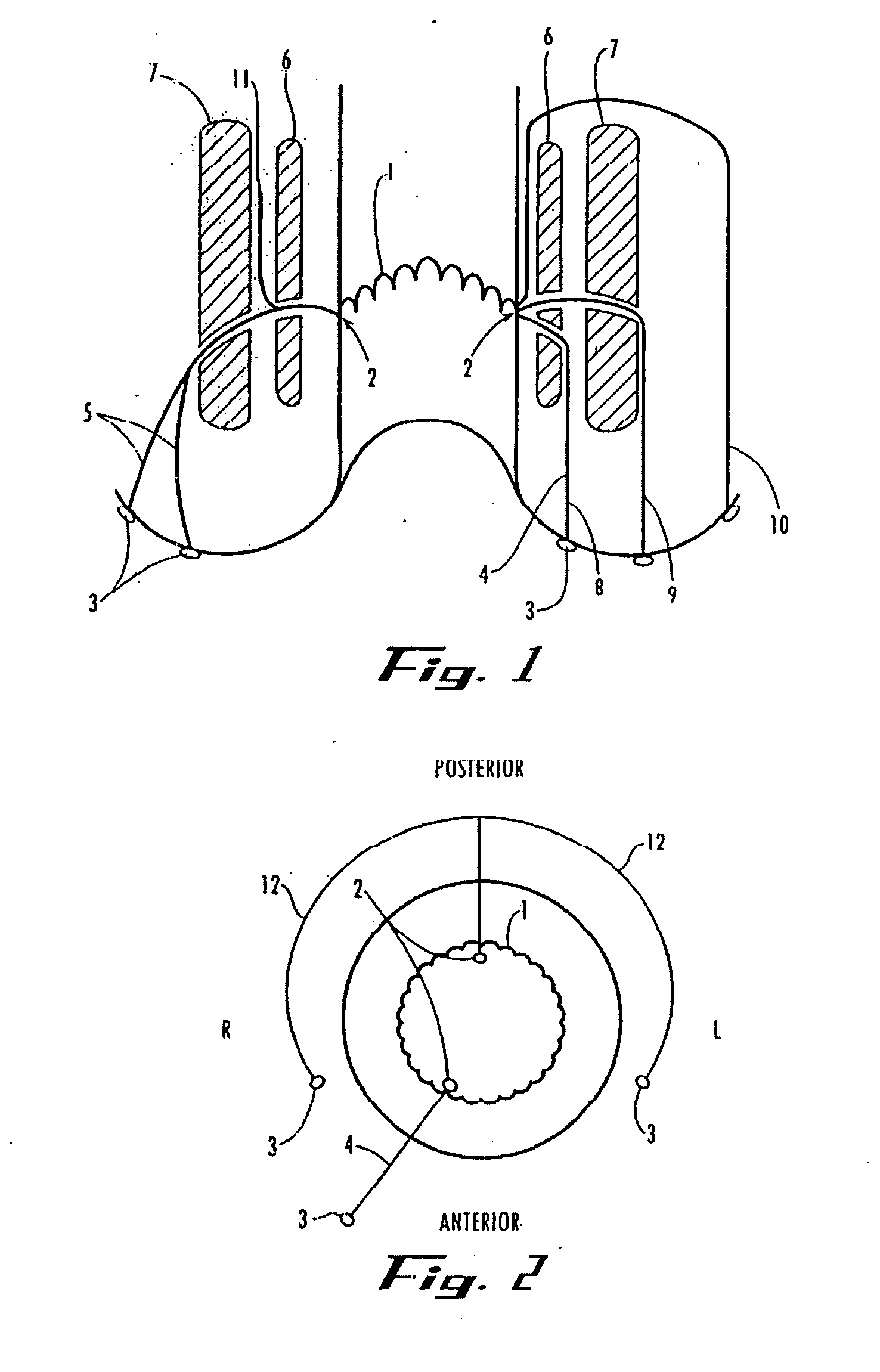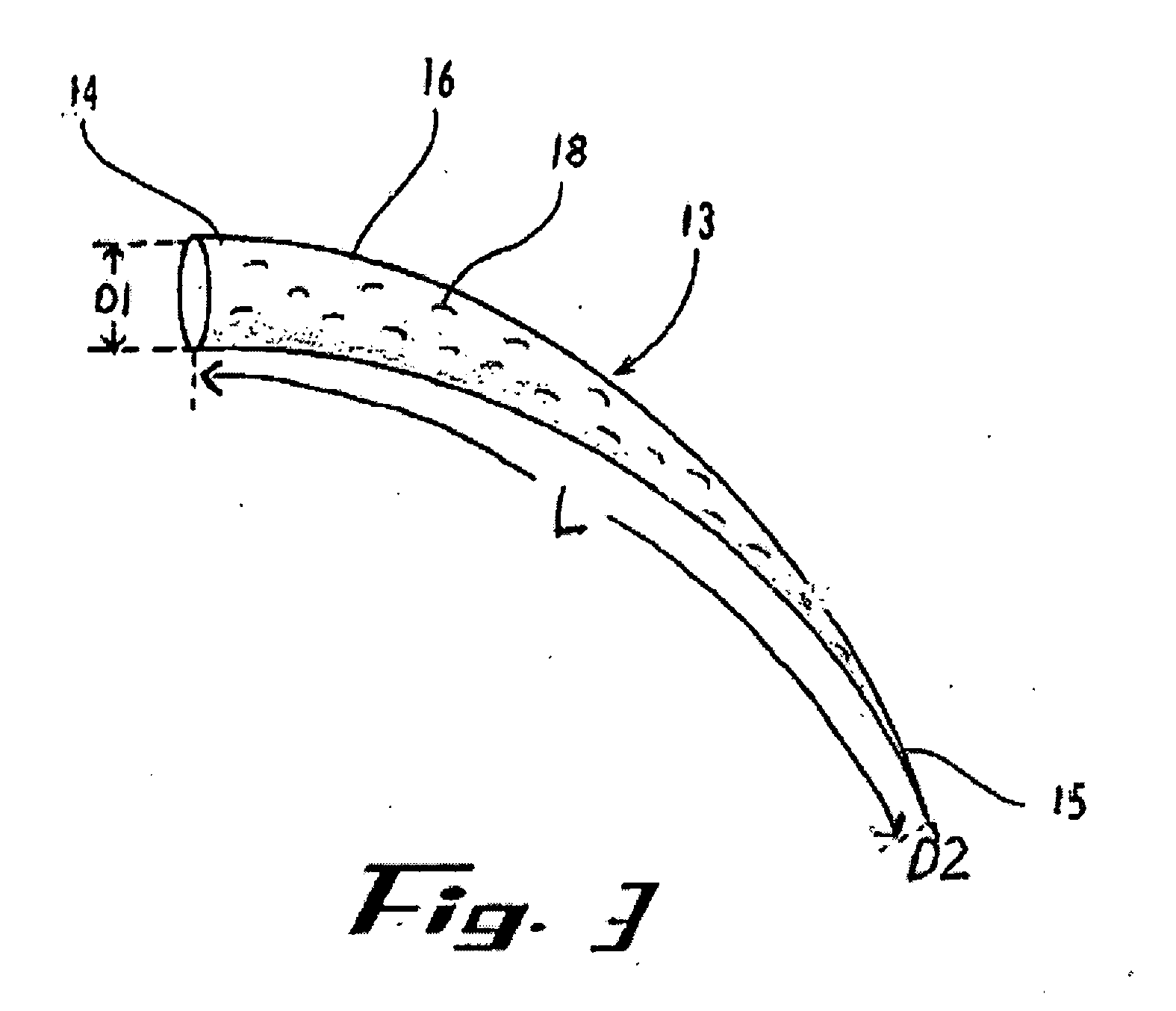Implantable graft to close a fistula
a technology of implantable grafts and fistulae, which is applied in the field of implantable grafts to close fistulae, can solve the problems of complex pathology, impaired sphincter control or even incontinence, and inability to achieve very good results, and achieves the effects of promoting tissue reconstruction, and reducing the risk of infection
- Summary
- Abstract
- Description
- Claims
- Application Information
AI Technical Summary
Benefits of technology
Problems solved by technology
Method used
Image
Examples
Embodiment Construction
[0023] The graft of the present invention may be used to plug or occlude any type of fistula, such as the types of fistula illustrated in FIGS. 1 and 2. Other types of fistula that may be occluded by the present invention include, but are not limited to, tracheo-esophageal fistulae, gastro-cutaneous fistulae, or fistulae occuring between the vagina and bladder (vesico-vaginal fistulae), between the vagina and urethra (urethro-vaginal fistulae), between the anorectum and vagina (recto-vaginal fistulae), between the anorectum and bladder (recto-vesical fistulae), between the anorectum and urethra (recto-urethral fistulae), between the anorectum and prostate (recto-prostatic fistulae) or between any other two portions of the body.
[0024] The graft 13 of the present invention may have any suitable configuration. For example, the graft may have a convex configuration, a concave configuration, an S-shaped configuration, a generally straight configuration, or any other configuration capabl...
PUM
 Login to View More
Login to View More Abstract
Description
Claims
Application Information
 Login to View More
Login to View More - R&D
- Intellectual Property
- Life Sciences
- Materials
- Tech Scout
- Unparalleled Data Quality
- Higher Quality Content
- 60% Fewer Hallucinations
Browse by: Latest US Patents, China's latest patents, Technical Efficacy Thesaurus, Application Domain, Technology Topic, Popular Technical Reports.
© 2025 PatSnap. All rights reserved.Legal|Privacy policy|Modern Slavery Act Transparency Statement|Sitemap|About US| Contact US: help@patsnap.com



